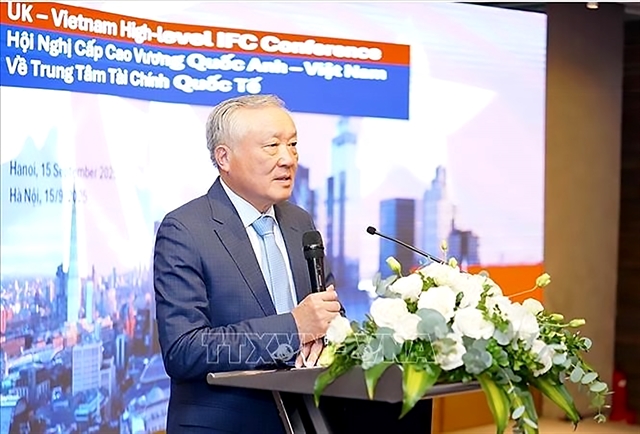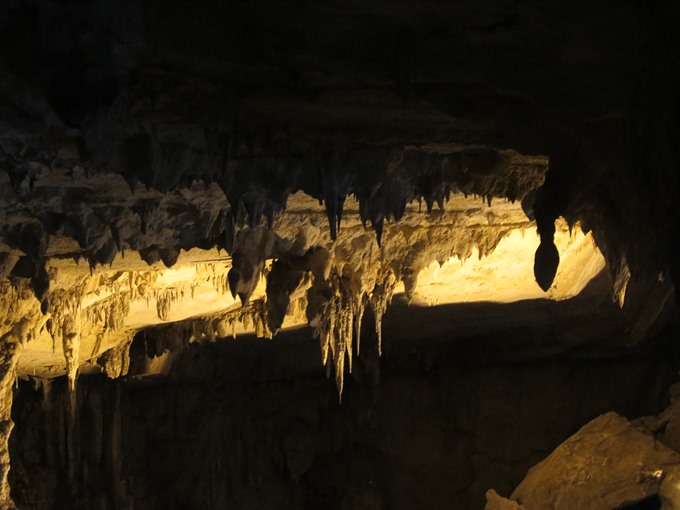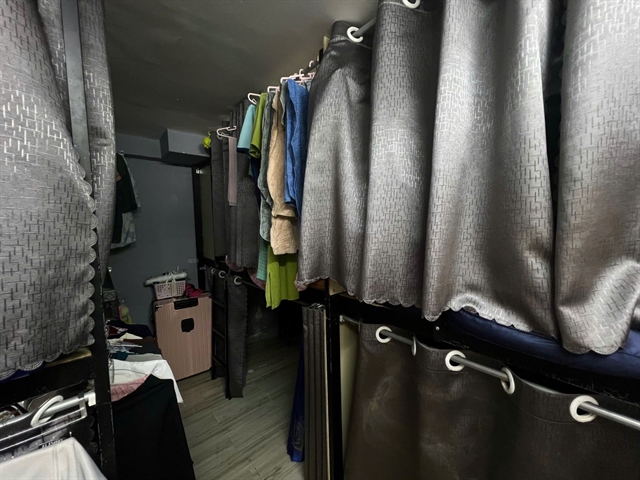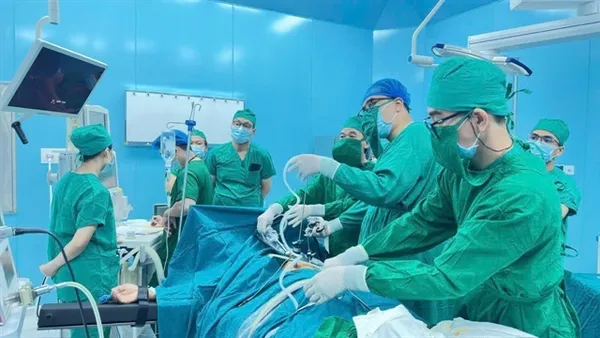

There are stories that ghosts once lived in the Hua Ma Cave. Today, the silence of the cave gives visitors the feeling that something strange once happened there.
 |
| Hua Mạ cave was opened to tourists only in 2007. |
There are stories that ghosts once lived in the Hua Ma Cave.
Once soldiers were stuck in there and could not get out.
People would hear the howls of their ghosts until a special ceremony was held to quieten them down.
Today, the silence of the cave gives visitors the feeling that something strange once happened there.
Hồng Vân
With its karst topography and poetic peaks, the northwestern province of Bắc Kạn offers travelers majestic landscapes and exciting discoveries. One of them is Hua Mạ Cave in Quảng Khê Commune, a hidden gem of impressive stalactites and mysterious legends.
Hua Mạ Cave is located within the Ba Bể National Park, about 80 kilometres from Bắc Kạn City. Soon after my local friend and I left the city, peaceful scenery unfolded in front of our eyes. From afar we could see the mountains playing hide-and-seek with the dawn fog. The first rays of sun shining on the reeds blowing in the wind created a perfect painting, dotted with smiling local farmers, their cattle and market stalls along the road.
I knew that we were getting nearer to the cave when I felt the cool breeze from Ba Bể lake. Passing by a village of a local ethnic minority, we eventually reached the foot of the mountain, where Hua Mạ Cave lies.
The cave "hangs" in Lèo Pèn Mountain, more than 300 metres above sea level. There was a convenient staircase leading up and the walk took about 15 minutes. My friend and I met only two other travelers along the way and soon we reached our target.
We reached the entrance gate of the cave, and once inside, we went from surprise to surprise. The deeper we went, the more it offered. The cave turned out to be much bigger than it appeared, more than 300 metres long and nearly 60 metres deep.
There were curving limestones looking like rice terraces and 10-metre-high stone pillars resembling those found in ancient temples and pagodas. Stalactites of various sizes and shapes adorn the cave throughout.
It was cool and a bit humid inside, which is why tourists go there in summer rather than winter.
It was so quiet we could hear your own breath. But the silence added to a sense of creepiness, that was not alleviated when my friend told me about a local legend.
Lèo Pèn is said to have been inhabited by ghosts. They could be heard howling from the cave every day when the sun went down. It was so scary that no one dared approach.
One day, as the sun was setting, a troop of soldiers passed by Lèng River in this area. They were about to cross the river to get to the neighboring village to rest. But their horse started whinnying and refused to cross the river. At the same time, a howl echoed from the side of Lèo Pèn Mountain.
Finding it strange, the commander of the troops asked local residents about the sounds and was eventually told they were made by the spirit of dead soldiers. The soldiers, so the legend goes, helped the royal court fight against an enemy who was so strong and fierce that the soldiers had to hold him in the cave. But the enemy then filled the entrance so that the soldiers could not get out.
On hearing this, the general decided to carry out a ritual, offering horses to the gods. When the ritual ended, the howl also stopped and the locals never heard it again. The area was then abandoned and over the years grew the beautiful stalactite like those we see today, said my friend.
In 2005, a group of international archaeologists examining the cave found some porcelain items from the Lê and Mạc dynasty of the 16th and 17th centuries. The collection included broken white-glazed plates and bowls with blue patterns.
These items may have been produced in ancient ceramics kilns in Hải Dương Province and belonged to a group of people who inhabited the cave.
The cave was open to tourists only in 2007. There are two gates to the cave: one on the mountain side, the other from Lèng River. One can choose to climb the staircase or kayak on the river to Hua Mạ Cave.
“I love the cave. It was bigger than I expected. While it is majestic inside, the landscape leading to it is also splendid. We saw some bats. We definitely had a good time,” said my new friend, Frenchman Calypso Jaladeau whom we met on the way.
We had lunch at a local restaurant recommended by my local friend and it was a perfect ending to a magical journey. — VNS
GLOSSARY
With its karst topography and poetic peaks, the northwestern province of Bắc Kạn offers travelers majestic landscapes and exciting discoveries. One of them is Hua Mạ Cave in Quảng Khê Commune, a hidden gem of impressive stalactites and mysterious legends.
Topography is the way in which the land is laid out.
A gem is a treasure.
A stalactite is a beautiful pillar-shaped feature that grows in a cave over many, many years.
From afar we could see the mountains playing hide-and-seek with the dawn fog.
Dawn is the early morning.
There was a convenient staircase leading up and the walk took about 15 minutes.
Convenient means suitable.
There were curving limestones looking like rice terraces and 10-metre-high stone pillars resembling those found in ancient temples and pagodas.
Resembling means “looking like”.
Stalactites of various sizes and shapes adorn the cave throughout.
Adorn means decorate.
It was cool and a bit humid inside, which is why tourists go there in summer rather than winter.
Humid means hot and with moisture in the air.
Lèo Pèn is said to have been inhabited by ghosts.
If a place is inhabited by ghosts, it means that ghosts live there.
But their horse started whinnying and refused to cross the river.
Whinnying means neighing gently. The noise that a horse makes is a neigh.
At the same time, a howl echoed from the side of Lèo Pèn Mountain.
If a howl echoes, the sound bounces back.
On hearing this, the general decided to carry out a ritual, offering horses to the gods.
A ritual is a ceremony.
In 2005, a group of international archaeologists examining the cave found some porcelain items from the Lê and Mạc dynasty of the 16th and 17th centuries.
Archaeologists are people who study and know a lot about the way people lived long ago. They find out about it by examining things they left behind.
WORKSHEET
State whether the following sentences are true, or false:
© Duncan Guy/Learn the News/ Viet Nam News 2017
1. True; 2. True; 3. False; 4. True; False.




